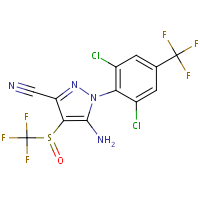The call for data was requested by the European Commission, which in 2013 imposed restrictions on the use of fipronil. In particular, its use as a seed treatment was prohibited, except on seeds sown in greenhouses and seeds of leek, onions, shallots and brassica vegetables sown in fields and harvested before flowering.
The new measures were taken following an EFSA assessment of the risk to bees from fipronil.
When it imposed the restrictions, the Commission said that within two years it would initiate a review of any new scientific information. The call for data is the first step of this process. Interested parties are asked to submit:
- literature data, including grey literature and data from other relevant research activities;
- study reports – such as acute laboratory studies, chronic toxicity studies, residues data, and field studies – conducted specifically to assess the risk to bees from fipronil that were not considered under the previous EFSA assessment;
- national evaluations and/or monitoring data not considered under the previous assessment.
All information should be submitted by 15 January 2016. Following receipt of a separate mandate from the European Commission, EFSA will then review the material and offer a conclusion concerning an updated risk assessment.
EFSA is also currently gathering new information related to the risks to bees from the neonicotinoid pesticides clothianidin, imidacloprid and thiamethoxam. This data call – which runs until 30 September 2015 – is part of the European Commission’s follow-up to the restrictions it imposed on the three substances in 2013.
- Call for new scientific information as regards the risk to bees from the uses of the active substance fipronil in the EU
- Call for new scientific information as regards the risk to bees from the use of the three neonicotinoid pesticide active substances clothianidin, imidacloprid and thiamethoxam applied as seed treatments and granules in the EU
For media enquiries please contact:
EFSA Media Relations Office
Tel. +39 0521 036 149; E-mail: Press@efsa.europa.eu
See FAN’s review of adverse effects

